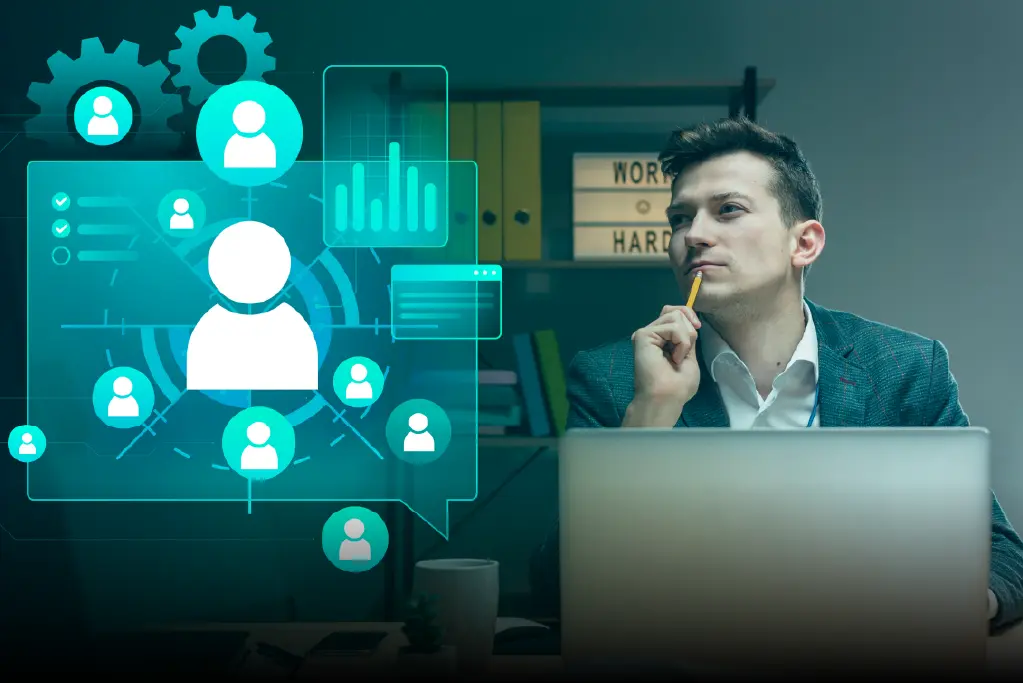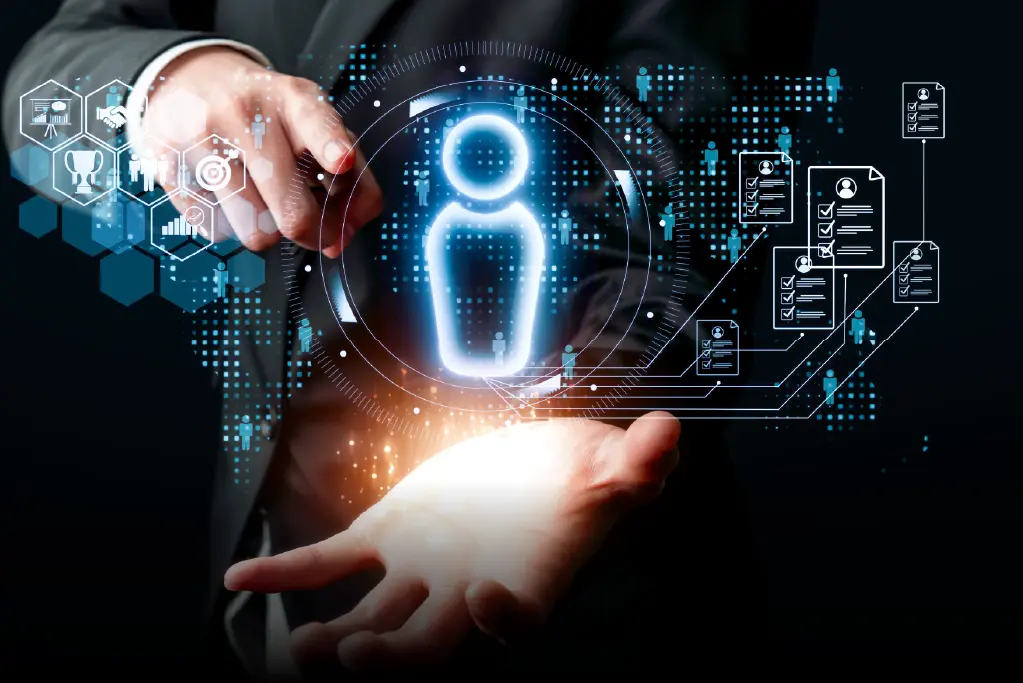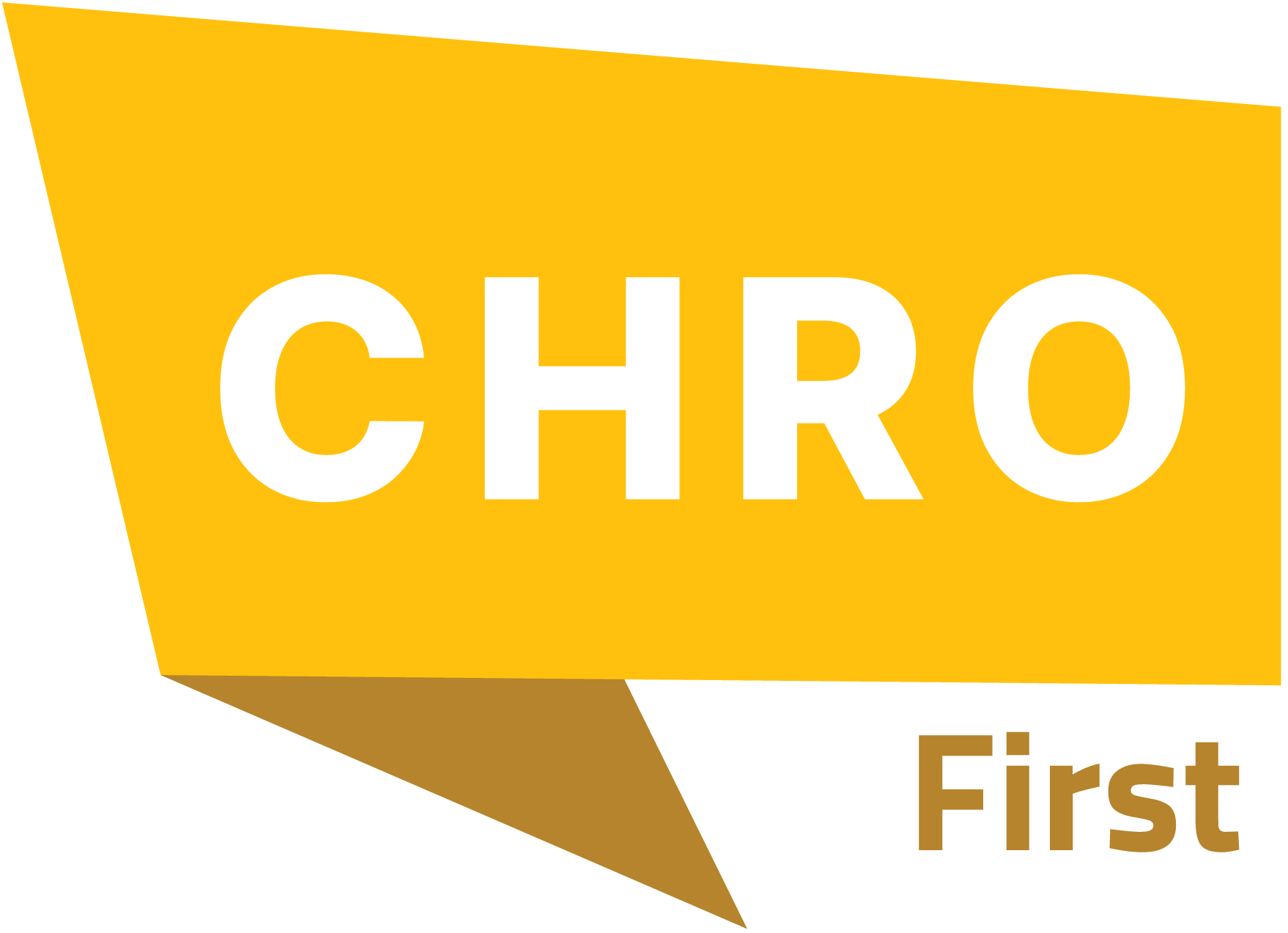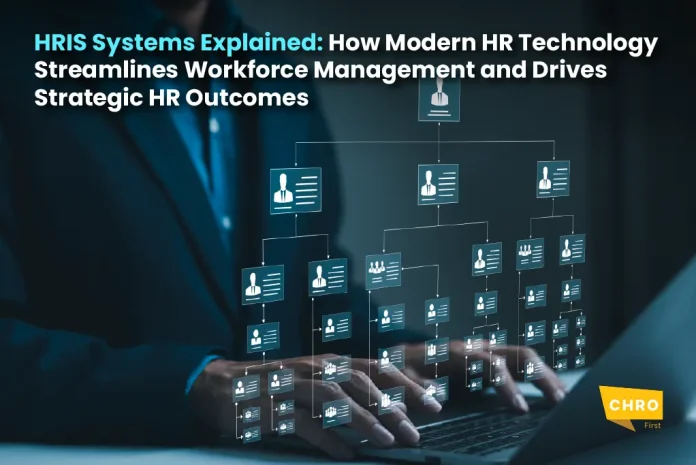If you ever sat through old school HR processes, you know the drill. Files stacked everywhere, spreadsheets fighting for attention, and updates getting lost because someone saved the wrong version. That setup worked when teams were smaller and expectations were slower, but the digital workforce doesn’t wait for anyone. People move faster, companies scale quicker, and decisions need to be made with far more clarity than a folder full of documents can offer.
This is where an HRIS or Human Resources Information System steps in. At its simplest, it’s a digital platform that pulls all your HR work into one connected system. It keeps employee records consistent, runs admin tasks in the background, and gives leaders the kind of visibility you just can’t get from manual workflows.
In this article, we look at three pillars that shape the real impact of modern HRIS systems. A centralized data base. Automated workflows that return hours back to HR. And analytics that help HR guide the business instead of reacting to it.
Data Centralization is the real single source of truth
Here’s where the whole HR setup stops feeling like a patchwork of half-updated spreadsheets and starts acting like an actual system that knows what it’s doing. When HRIS systems pull every employee detail into one clean relational database, the chaos starts to settle. Personal info, compensation, benefits, performance notes, training progress, all of it sits in one place. No scavenger hunt. No five versions of the same data floating around. Just one truth everyone can rely on.
And here’s the fun part. Once you centralize data, the accuracy problem stops eating your time. Payroll stops calling HR to verify basic details. Benefits stops chasing down mismatched records. Management stops making decisions based on stale screenshots. Teams work from the same source, so the errors drop and the decisions finally have a leg to stand on. That matters even more right now because the job market is anything but forgiving. The United States unemployment rate was 4.3 percent in August 2025 with 7.4 million people unemployed. With that much movement, data discipline cannot be optional.
You also get the compliance sanity you never had before. Think GDPR and CCPA. Think access controls that actually work. Think audit trails that don’t make you want to cry two days before an inspection. A centralized HRIS lets you decide who sees what and when, instead of hoping no one clicks into something they shouldn’t. It keeps the system tight and predictable, which is exactly what regulators expect you to deliver.
And to make it real, picture this. An employee gets married and updates their last name once. That one update quietly feeds payroll, benefits, attendance, and reporting. No back-and-forth. No duplicates. No accidental mismatches. Just one clean update that moves across the entire system without drama.
Workflow Automation & Operational Efficiency
HR teams are drowning in repetitive work that nobody enjoys and everyone pretends is unavoidable. Workflow automation inside HRIS systems cuts that cycle at the root. Not with fancy jargon. Just with simple, predictable systems that take care of the heavy lifting.
Think about the employee lifecycle for a second. It’s one long chain of paperwork, handoffs, approvals, and follow ups. Now picture that chain running on its own. Recruitment starts moving faster when the system auto prepares documents, assigns onboarding tasks, and pulls in data directly from your ATS. Suddenly you’re not babysitting processes. You’re actually running them.
Time and attendance used to be another headache. People forgot to log hours. Managers chased leave requests. Someone always messed up the accrual math. With automation, the system keeps the clock clean. Leave requests go straight into the queue. Balances update on their own. Everyone sees what they need to see without sending ten messages to confirm something that should have been obvious on day one.
Payroll is where the real magic happens. The HRIS passes data straight into payroll without the usual back and forth. Fewer manual entries. Fewer ‘wait this number looks odd’ moments. Payroll becomes a clean landing instead of a monthly panic attack.
But the sneaky unlock is self-service. Employees update their own contact details or check their pay stubs. Managers approve time off and look at team performance without calling HR every ten minutes. The HR inbox finally stops acting like an emergency helpline.
UK workers can save around 122 hours every year from AI powered admin automation. Yet only 6% feel their organization is actually turning AI into real value. That gap should bother anyone running a business. Because every automated hour is an hour HR can use for strategic planning, workforce development, or anything that actually pushes the organization forward.
Automation is not about speed. It is about freeing human time so teams can work on the stuff that shapes the future and not the paperwork that belongs in the past.
Driving Strategic HR Decisions with Analytics

Most teams claim they’re data driven but still run half their decisions on gut feelings and half-baked assumptions. HR falls into that trap faster than anyone because the work is crowded, noisy and reactive. The moment an organization plugs proper analytics into its HRIS systems, that chaos starts settling and HR finally gets a clear view of what’s really happening with its people. This is the point where HR steps out of admin mode and steps into strategy mode.
Let’s start with the basics. When your dashboards show turnover rates and the actual cost of losing people, you don’t need a consultant to tell you where the bleeding starts. When engagement scores sit side by side with team performance, you stop guessing which manager needs coaching. When time to productivity is visible, onboarding gaps stop hiding in the shadows. Even diversity and inclusion become easier to work on because you see the numbers instead of relying on feel good narratives. All of this becomes usable because it sits in one place, not ten scattered files.
The real magic arrives when the system begins spotting patterns faster than the humans in the room. Predictive analytics can flag teams that might lose key talent, identify roles that need upskilling and even signal where succession plans are dangerously thin. It’s not about trying to be futuristic. It’s about avoiding those last minute fire drills that drain everyone.
And the pressure is real. The World Economic Forum says around 39% of core job skills are expected to change by 2030. That alone should be a wakeup call. If the skill map of your workforce is shifting that fast, relying on instinct will put you behind before you even realize it.
What really changes the game is how leaders use this information. When department heads can pull clean reports without waiting on HR, their decisions get sharper. When the C suite sees trends backed by data, they stop treating HR like a cost center and start treating it like an intelligence hub.
Also Read: How to Conduct a Comprehensive Pay Equity Analysis: Key Steps for Building Fair and Transparent Compensation?
Core Components that Map the Real Backbone of an HRIS
Every HRIS looks different on the surface but the real structure underneath follows the same backbone. Core HR is the first piece and it holds the basic employee records that keep the company running. It’s the one place where personal details, job information and contractual data actually stay consistent. Then you have talent acquisition which handles the hiring flow and keeps recruitment connected to everything that happens after day one.
Compensation and benefits come next and this is where payroll, insurance selections and salary changes stop slipping through the cracks. Learning and development usually ties in through an LMS so training, certifications and skill tracking sit right beside everyday performance data. Speaking of performance, that module pulls in goals, reviews and feedback so managers don’t operate in the dark.
The real value shows up when all these pieces speak to each other without friction. Hiring data feeds onboarding. Performance insights guide learning paths. Compensation updates sync across records without someone chasing files. When the system works as one, HR stops firefighting and starts operating with a clean, connected picture of the entire workforce.
The Future of HR is Integrated and Strategic

If you zoom out for a second, the pattern becomes obvious. Strong HRIS system gives you one clean data foundation instead of scattered records. It cuts the repetitive work by automating workflows that used to drain whole days. It turns analytics into a quiet power source that helps leaders read the organization instead of guessing their way through decisions. These three pieces work together and that’s what makes the system feel more like an operating engine than a software tool.
The next phase is already unfolding. AI and machine learning are pushing HRIS platforms into a space where they don’t just track what happened but guide what should happen next. Experiences will get more personalized. Skills maps will adjust in real time. And the pressure to keep up will only grow. Microsoft reports that 82% of leaders plan to use digital labor to expand workforce capacity in the coming year.
So the message is simple. HRIS is no longer about convenience. It sits at the center of business strategy and decides how fast a company can adapt, scale and stay competitive.

